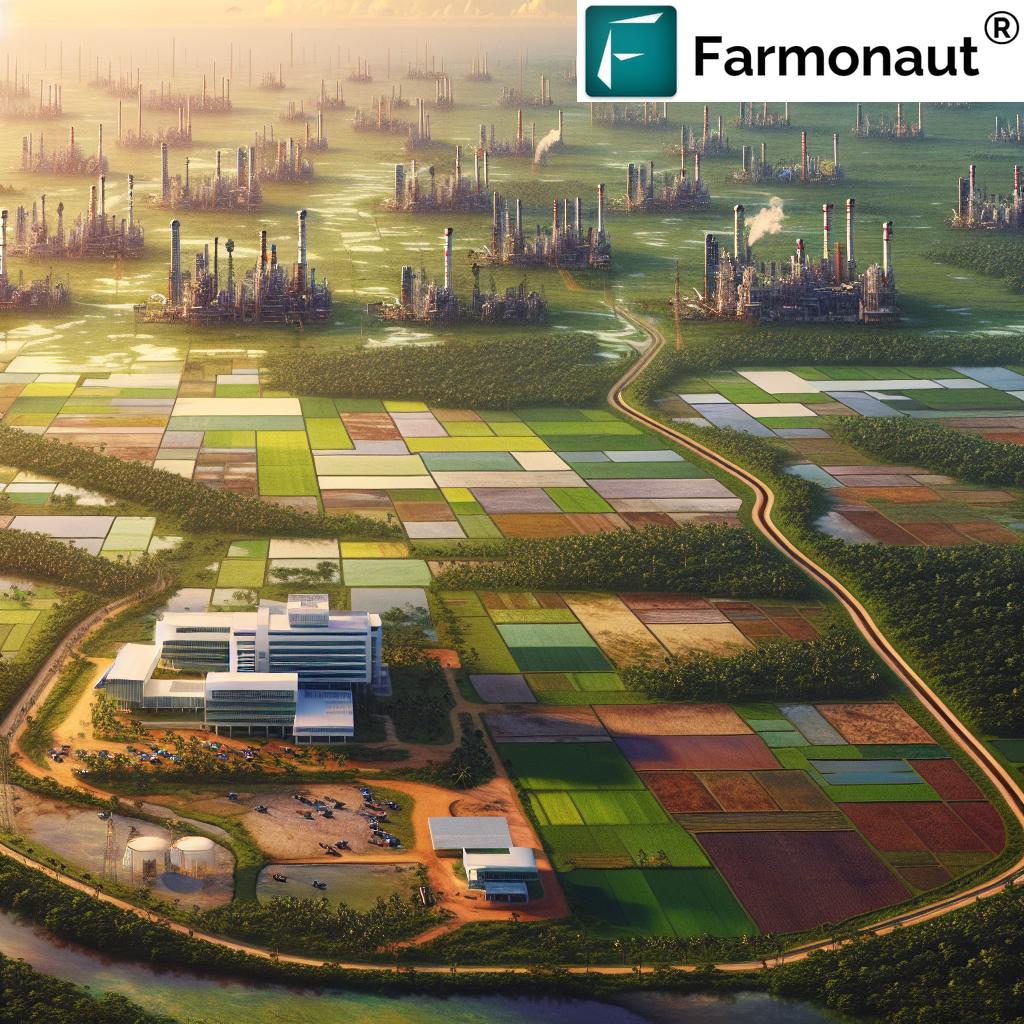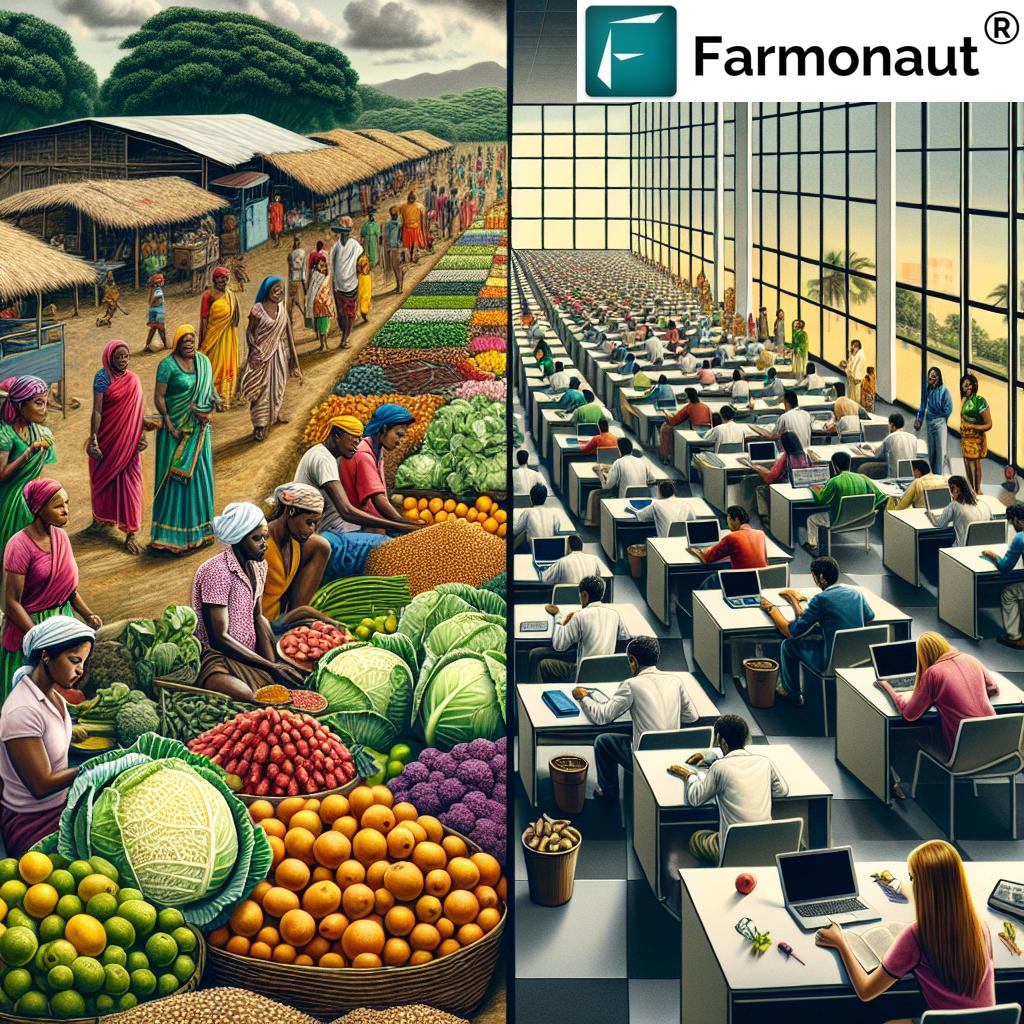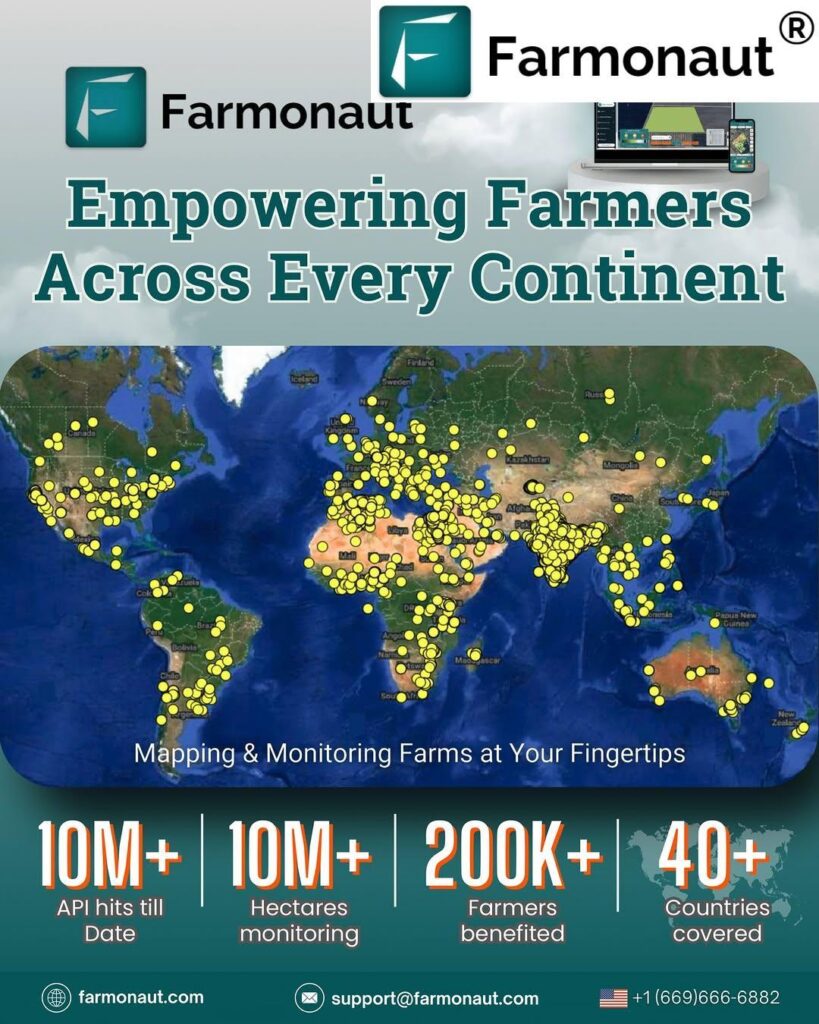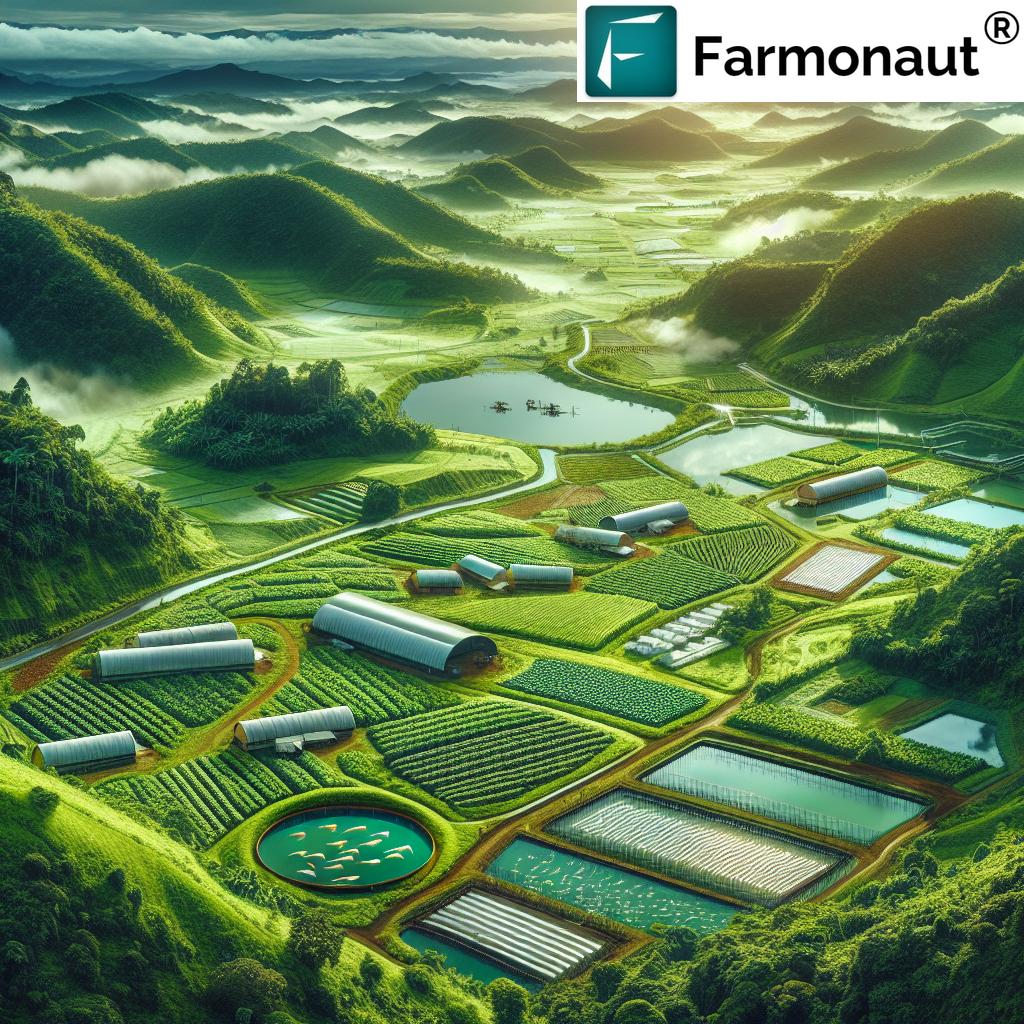Guyana’s Economic Crossroads: Sustainable Development Through Land Empowerment and Higher Education

“Guyana’s economic growth rate surged to 43.5% in 2020, driven primarily by its emerging oil and gas industry.”
As we delve into the intricate tapestry of Guyana’s economic landscape, we find ourselves at a pivotal juncture where the nation’s future hangs in the balance. The South American country, known for its lush rainforests and diverse culture, is experiencing an unprecedented economic boom, largely fueled by its burgeoning oil and gas industry. However, this rapid growth brings with it a complex set of challenges and opportunities that demand careful consideration and strategic planning.
In this comprehensive exploration, we will examine the dual paths that lie before Guyana: the allure of quick prosperity through its energy sector and the sustainable, long-term development rooted in land empowerment and higher education. Our journey will take us through the historical context of Guyana’s development, the current economic landscape, and the potential futures that different strategies might yield.
The Oil and Gas Boom: A Double-Edged Sword
Guyana’s recent discovery of substantial oil reserves off its coast has catapulted the country into the global spotlight. With an estimated economic growth rate upwards of 30 percent and a Gross National Income (GNI) per capita that skyrocketed to $20,360 in 2023, a 36.46% increase from 2022, Guyana is experiencing what many economists refer to as a ‘resource boom’.
This rapid influx of wealth presents both opportunities and challenges:
- Increased government revenue for infrastructure and social programs
- Potential for job creation in the energy sector and related industries
- Risk of ‘Dutch disease’ – where the boom in one sector leads to decline in others
- Potential for widening income inequality
- Environmental concerns related to oil extraction and increased carbon emissions
While the oil and gas industry promises quick economic gains, it also necessitates the import of skilled labor to meet the technical demands of this sector. This influx of foreign expertise, while necessary in the short term, raises questions about long-term employment prospects for Guyanese citizens and the sustainability of this economic model.
The Alternative Path: Land Empowerment and Sustainable Development
Contrasting with the oil-driven model is an alternative vision for Guyana’s development, one that harks back to the ideas of Dr. Cheddi Jagan, a pivotal figure in Guyana’s history. This approach emphasizes empowering the local population through land ownership and sustainable agricultural practices.

“Guyana’s Black Bush Polder and Tapakuma land settlement schemes have empowered thousands of small-scale farmers since their inception.”
Historical land settlement schemes like Black Bush Polder and Tapakuma serve as prime examples of this approach:
- Black Bush Polder: Allocated 2 acres for homesteads and 10 acres for rice cultivation
- Canals Polder: Focused on diversified crops including citrus, coffee, cocoa, and ground provisions
- Tapakuma Irrigation Project: Benefited approximately 5,000 farmers, mainly smallholders with 2 to 20 acres each
These initiatives not only provided land ownership but also fostered agricultural diversity and economic resilience among small-scale farmers. The success of these programs demonstrates the potential for sustainable development rooted in local empowerment and agricultural innovation.
The Role of Higher Education in Guyana’s Development
Complementing the land empowerment strategy is the crucial role of higher education in Guyana’s long-term development. The establishment of the University of Guyana by Dr. Jagan was a visionary step towards creating a knowledge-based economy. This focus on education aligns with successful development models seen in the ‘Asian Miracle’ countries, where investment in human capital played a pivotal role in economic transformation.
Higher education in Guyana serves multiple purposes:
- Developing a skilled local workforce capable of driving innovation
- Reducing dependency on imported labor for technical and managerial roles
- Fostering research and development in sustainable agricultural practices
- Promoting social mobility and reducing income inequality
By investing in education, Guyana can create a foundation for sustainable economic growth that extends beyond the finite resources of its oil and gas reserves.
Comparative Analysis: Oil-Driven Growth vs. Sustainable Development
| Aspect | Oil and Gas Industry | Land Empowerment and Education |
|---|---|---|
| Short-term GDP Growth | Very High (30%+) | Moderate (5-10%) |
| Job Creation | High in specialized sectors | Broad-based across multiple sectors |
| Income Distribution | Potential for high inequality | More equitable distribution |
| Environmental Sustainability | High carbon footprint | Lower environmental impact |
| Long-term Economic Resilience | Vulnerable to oil price fluctuations | More stable and diversified |
| Social Development | Risk of social disparities | Promotes social cohesion |
| Educational Opportunities | Limited to specific technical fields | Broad-based educational development |
This comparative analysis highlights the trade-offs between immediate economic gains and sustainable, inclusive development. While the oil and gas industry offers rapid growth, the land empowerment and education model provides a more balanced and resilient path forward.
The Role of Technology in Sustainable Agricultural Development
In the context of Guyana’s agricultural development, innovative technologies play a crucial role in enhancing productivity and sustainability. Companies like Farmonaut offer advanced solutions that can significantly benefit Guyana’s agricultural sector. Farmonaut’s satellite-based farm management solutions provide valuable tools for precision agriculture, which is particularly relevant for Guyana’s small-scale farmers and larger agricultural projects alike.
Some key benefits of integrating such technologies include:
- Real-time crop health monitoring using satellite imagery
- AI-driven advisory systems for optimized farming practices
- Efficient resource management, reducing waste and environmental impact
- Improved access to financial services through satellite-based verification for crop loans and insurance
For more information on how these technologies can be applied in Guyana’s context, visit Farmonaut’s Crop Plantation and Forest Advisory services. This platform offers tailored solutions that could significantly enhance the productivity and sustainability of Guyana’s agricultural initiatives.
Balancing Act: Integrating Oil Wealth with Sustainable Development
The challenge for Guyana lies in striking a balance between leveraging its newfound oil wealth and pursuing sustainable, inclusive development. Here are some strategies that could help achieve this balance:
- Sovereign Wealth Fund: Establish a well-managed fund to invest oil revenues in long-term development projects, including education and sustainable agriculture.
- Diversification: Use oil revenues to invest in diversifying the economy, with a focus on sectors like agriculture, eco-tourism, and technology.
- Skills Development: Invest in vocational training and higher education to prepare the local workforce for both the oil industry and other sectors.
- Environmental Protection: Implement strict environmental regulations and invest in renewable energy to offset the carbon footprint of the oil industry.
- Land Reform and Agricultural Modernization: Continue and expand land settlement schemes, coupled with investment in agricultural technology and infrastructure.
By implementing these strategies, Guyana can work towards a future where the benefits of its oil wealth are channeled into creating a more sustainable and equitable society.
The Global Context: Lessons from Other Resource-Rich Nations
Guyana’s situation is not unique in the global context. Many nations have grappled with the challenges of sudden resource wealth. By examining the experiences of other countries, we can glean valuable insights:
- Norway: Successfully managed its oil wealth through a sovereign wealth fund, investing in long-term development and maintaining a diversified economy.
- Nigeria: Struggled with the ‘resource curse’, experiencing economic instability and widening inequality despite significant oil revenues.
- Botswana: Managed its diamond wealth effectively, investing in education and healthcare, resulting in steady economic growth and improved living standards.
These examples underscore the importance of prudent management of resource wealth and the need for long-term planning focused on sustainable development.
The Path Forward: Recommendations for Guyana’s Sustainable Development
As Guyana stands at this critical juncture, we propose the following recommendations to ensure a balanced and sustainable path forward:
- Invest in Education: Expand and modernize the University of Guyana and vocational training institutions to develop a skilled local workforce.
- Revitalize Land Settlement Schemes: Modernize and expand programs like Black Bush Polder, incorporating advanced agricultural technologies for increased productivity.
- Sustainable Agriculture: Invest in sustainable farming practices and technologies. Platforms like Farmonaut’s large-scale farm management solutions can play a crucial role in optimizing agricultural operations and ensuring sustainability.
- Diversify the Economy: Use oil revenues to invest in non-oil sectors, particularly in areas where Guyana has a comparative advantage, such as eco-tourism and sustainable forestry.
- Environmental Protection: Implement stringent environmental regulations and invest in renewable energy projects to offset the environmental impact of oil extraction.
- Transparent Resource Management: Establish transparent mechanisms for managing oil revenues, including a well-governed sovereign wealth fund.
- Infrastructure Development: Invest in critical infrastructure, particularly in rural areas, to support agricultural development and improve overall connectivity.
By implementing these recommendations, Guyana can work towards a future where the benefits of its oil wealth are channeled into creating a more sustainable, equitable, and prosperous society for all its citizens.
Conclusion: Charting a Sustainable Course for Guyana’s Future
As we’ve explored throughout this analysis, Guyana stands at a critical crossroads in its development journey. The allure of rapid economic growth through the oil and gas industry is tempered by the risks of environmental degradation, social inequality, and long-term economic instability. On the other hand, the path of sustainable development through land empowerment and education offers a more balanced, albeit slower, route to prosperity.
The optimal path forward for Guyana likely lies in a carefully calibrated approach that harnesses the benefits of its oil wealth while steadfastly investing in sustainable agriculture, education, and diversified economic development. By learning from historical successes like the Black Bush Polder and Tapakuma schemes, and integrating modern technologies and sustainable practices, Guyana can create a development model that is both economically robust and socially inclusive.
As we look to the future, it’s clear that Guyana’s choices today will profoundly shape its economic landscape and social fabric for generations to come. By prioritizing sustainable development, empowering its citizens through land ownership and education, and judiciously managing its newfound oil wealth, Guyana has the potential to emerge as a model of balanced and inclusive growth in the 21st century.
The journey ahead is complex and challenging, but with careful planning, transparent governance, and a commitment to long-term sustainability, Guyana can navigate its economic crossroads and chart a course towards a prosperous and equitable future for all its citizens.
FAQ Section
- Q: What is the main challenge Guyana faces with its oil wealth?
A: The main challenge is balancing rapid economic growth from oil with sustainable, inclusive development that benefits all citizens. - Q: How can land settlement schemes contribute to Guyana’s development?
A: Land settlement schemes empower small-scale farmers, promote agricultural diversity, and contribute to more equitable economic growth. - Q: What role does higher education play in Guyana’s development strategy?
A: Higher education is crucial for developing a skilled local workforce, reducing dependency on imported labor, and fostering innovation and research. - Q: How can Guyana avoid the ‘resource curse’ associated with oil wealth?
A: By diversifying its economy, investing in education and sustainable sectors, and establishing transparent mechanisms for managing oil revenues. - Q: What are some sustainable alternatives to oil-driven growth in Guyana?
A: Sustainable alternatives include investing in agriculture, eco-tourism, renewable energy, and technology sectors.
Earn With Farmonaut: Join Farmonaut’s affiliate program and earn 20% recurring commission by helping farmers save 10% with your promo code. Onboard 10 Elite farmers monthly to earn a minimum of $148,000 annually—start now and grow your income!
For those interested in leveraging technology for sustainable agricultural practices, Farmonaut offers a range of solutions:
For developers interested in integrating Farmonaut’s technology into their own applications, check out the Farmonaut API and the API Developer Docs.














